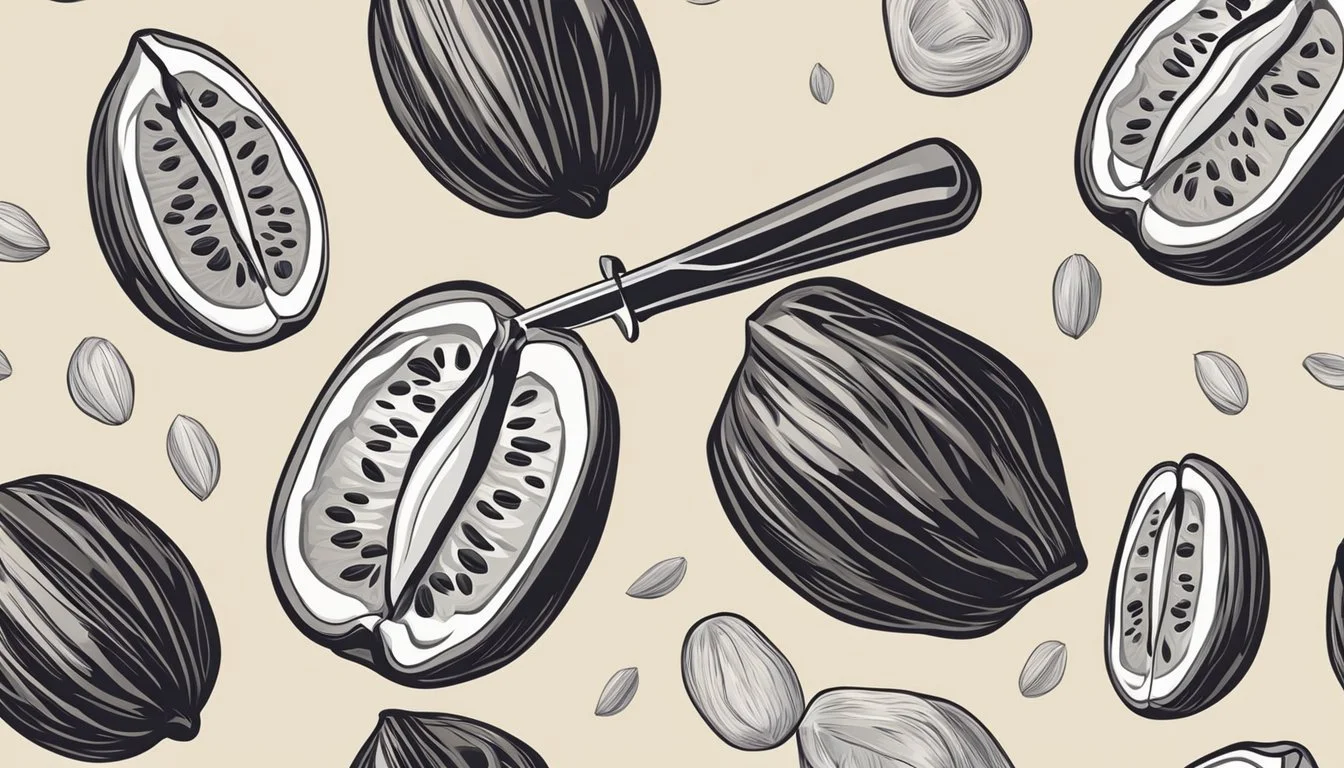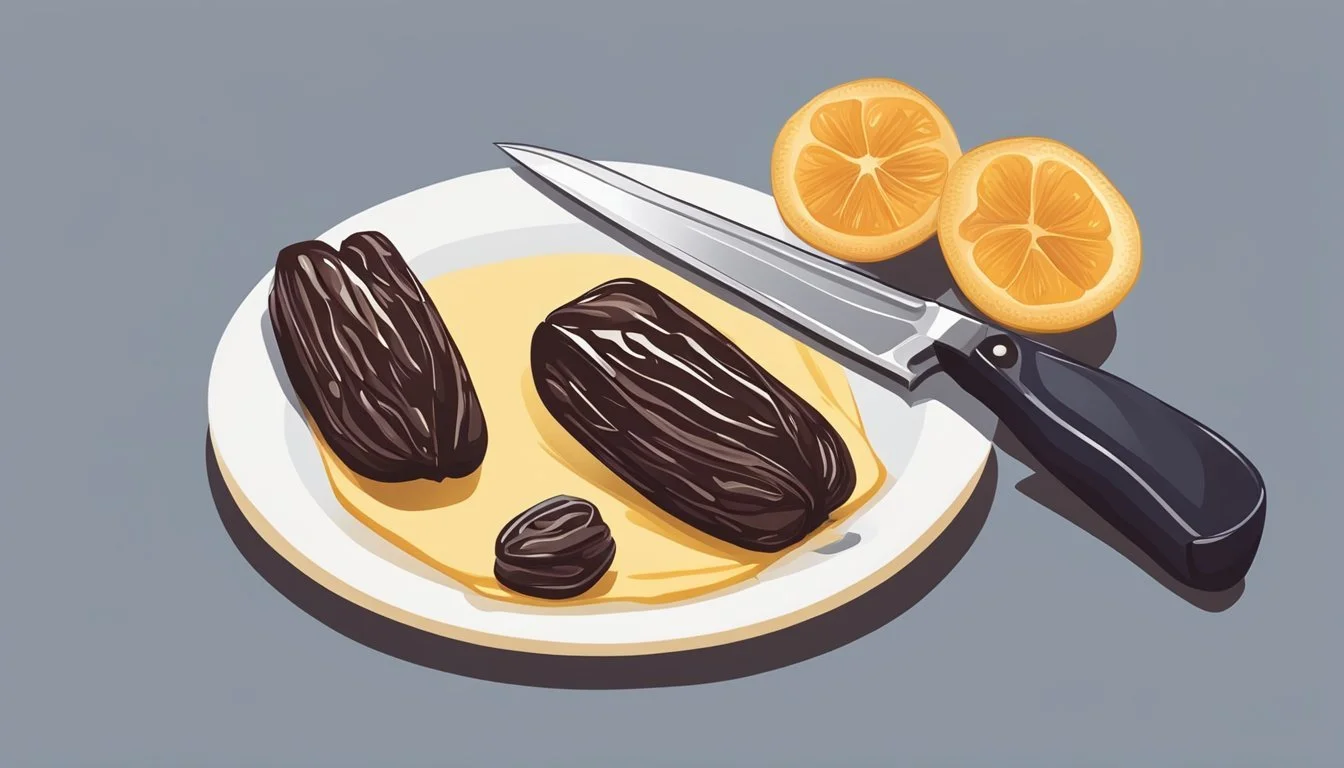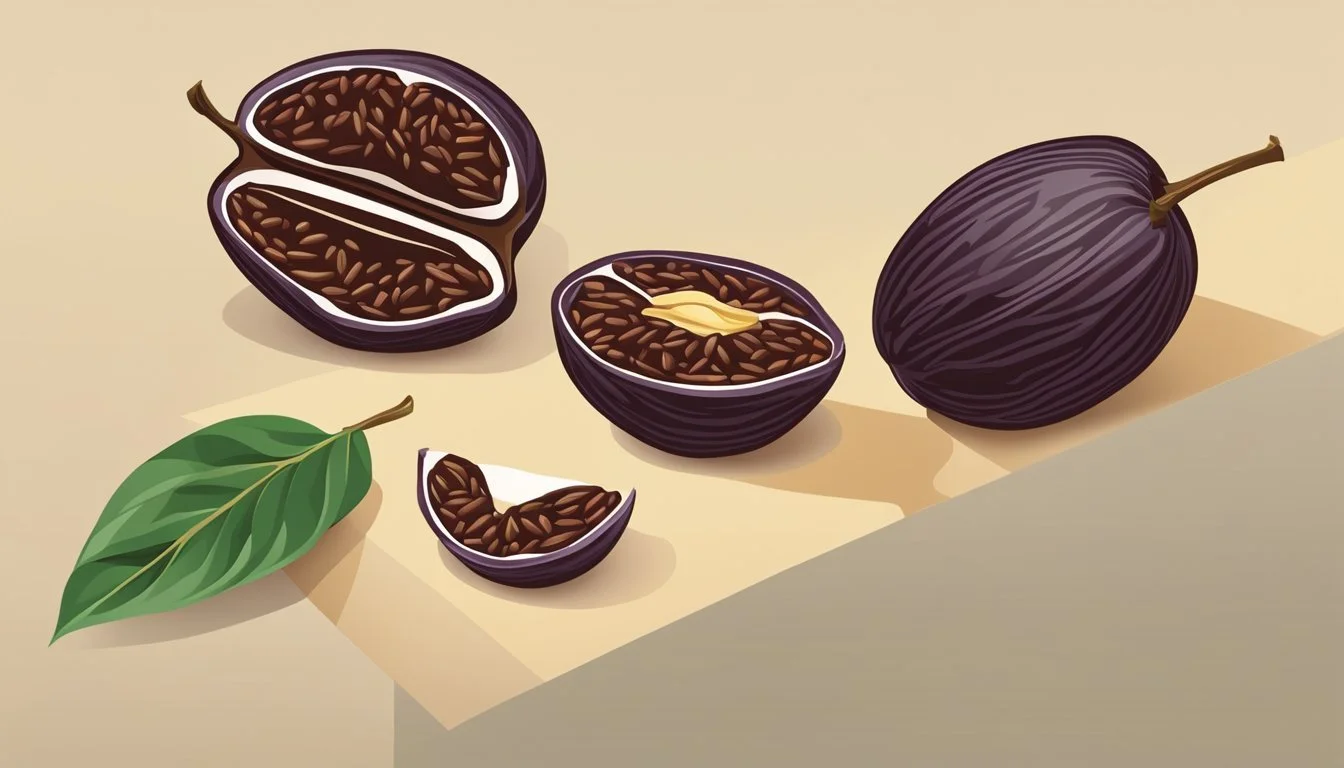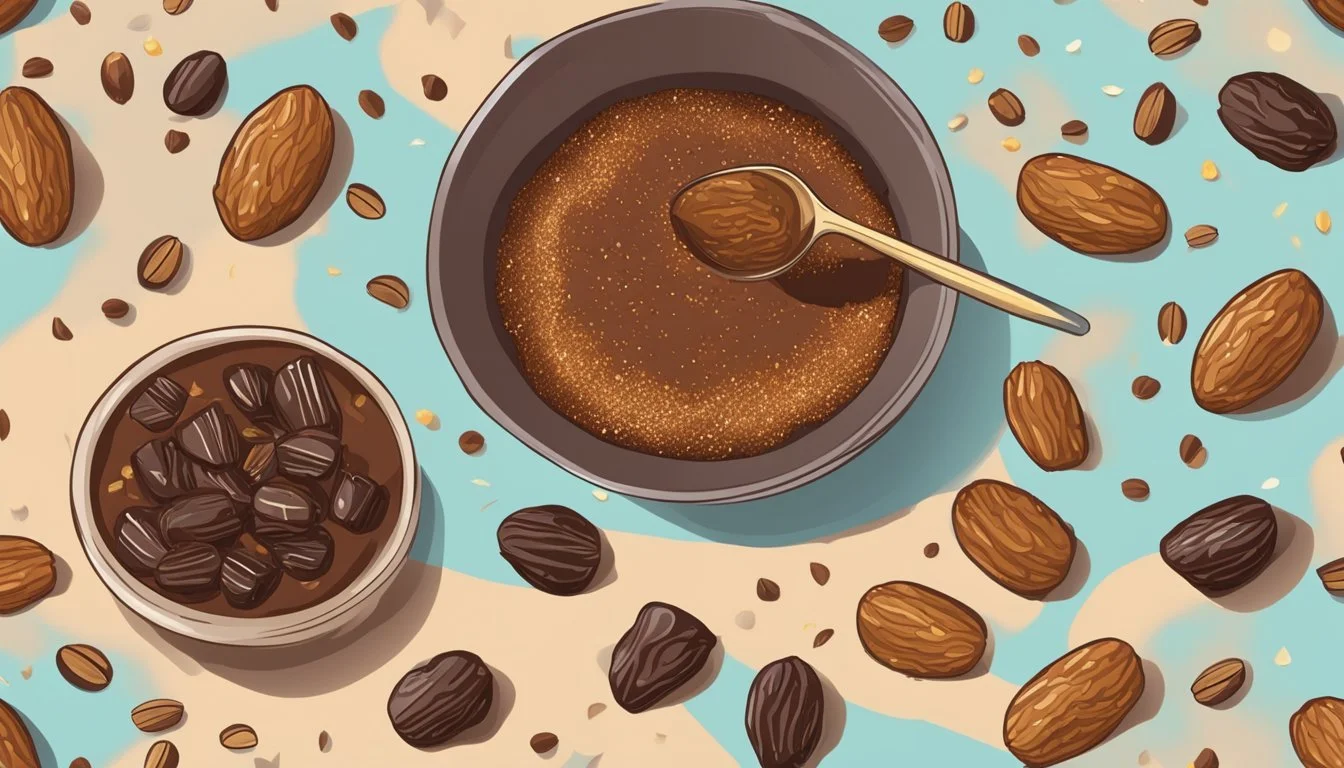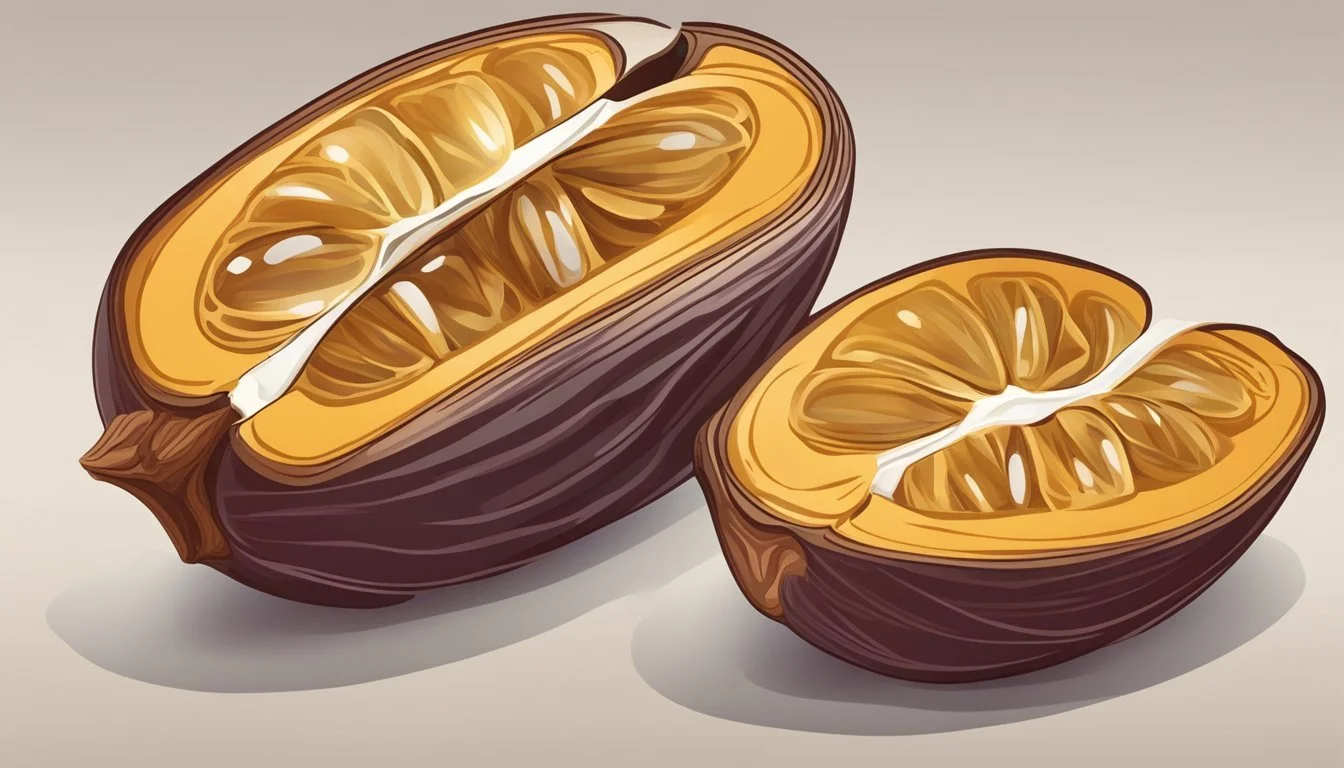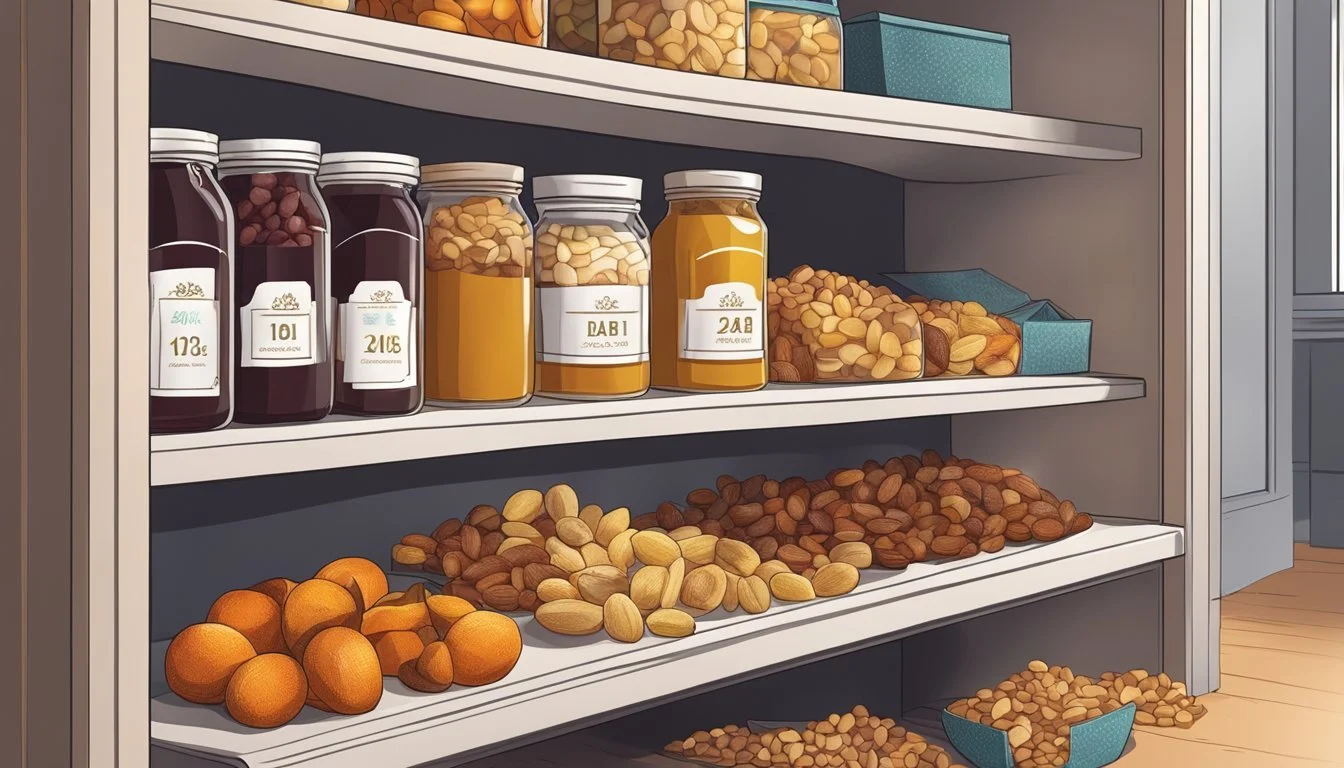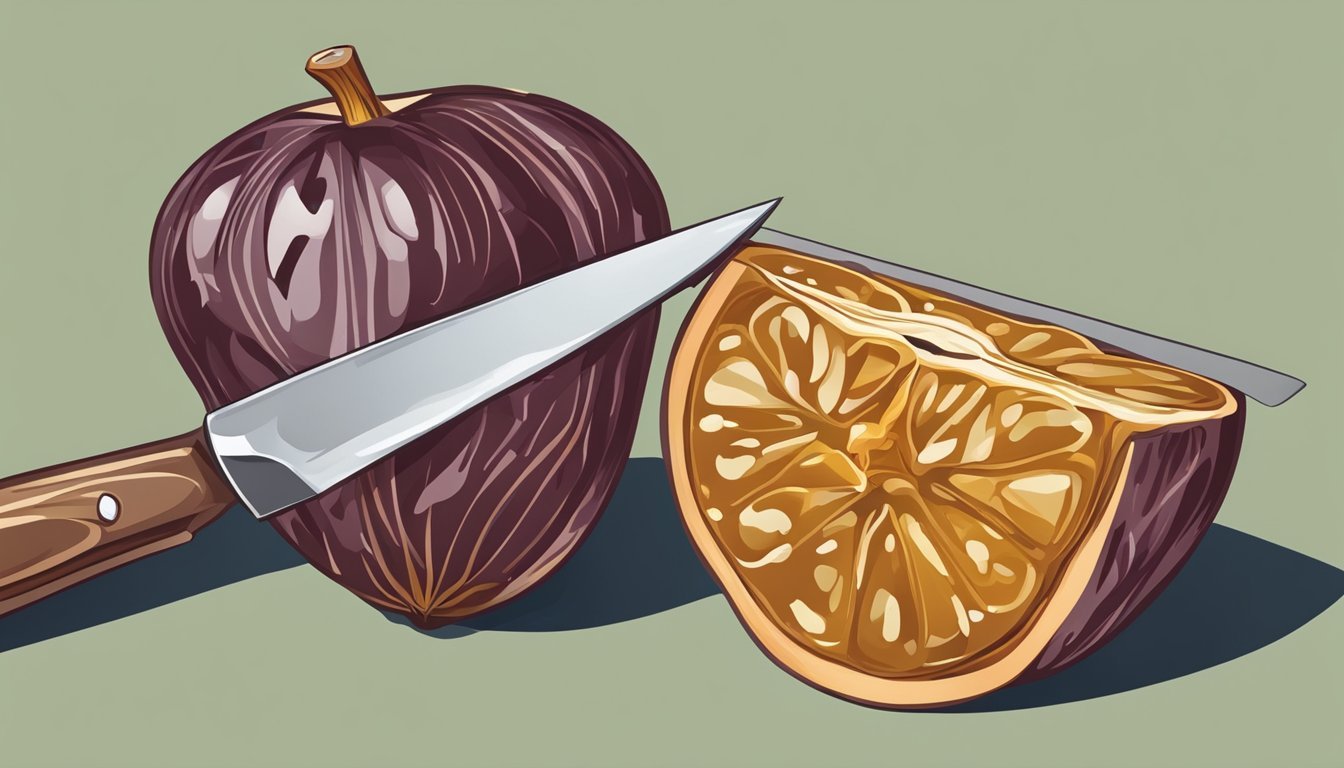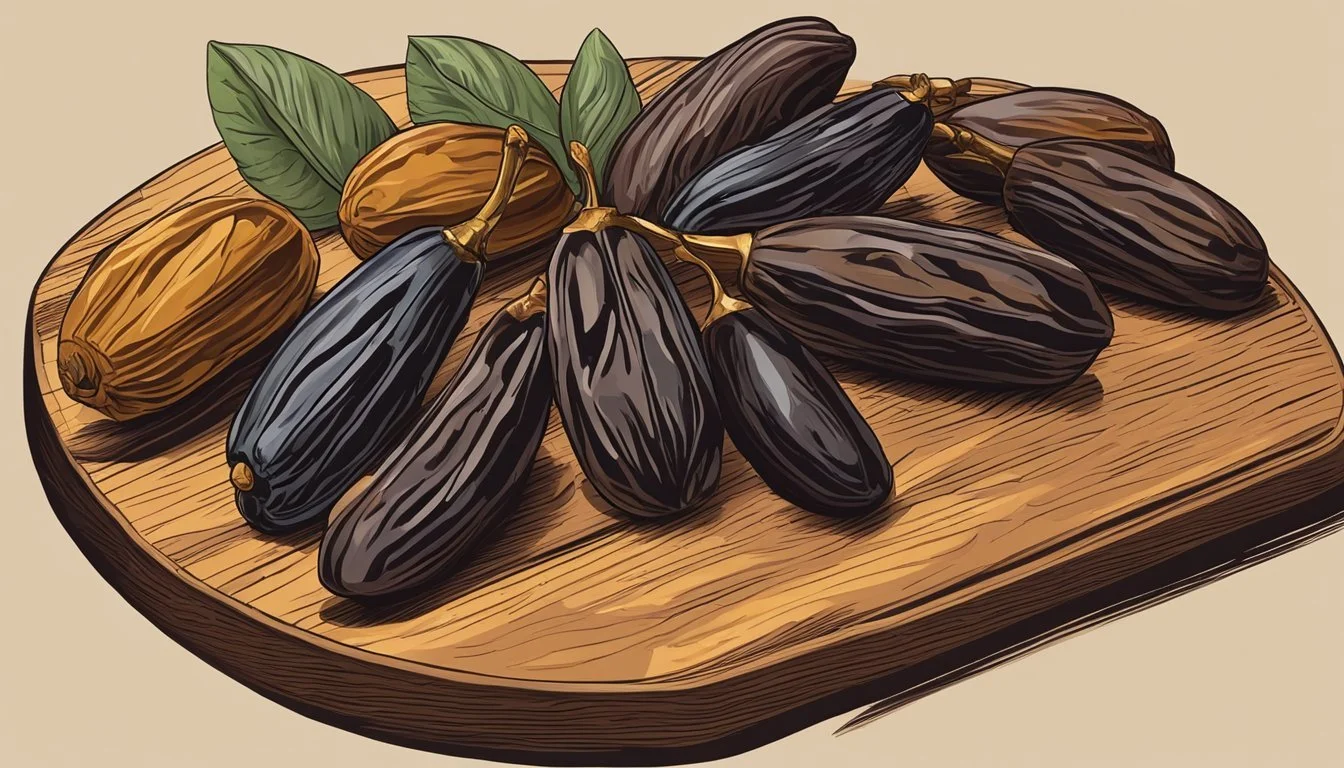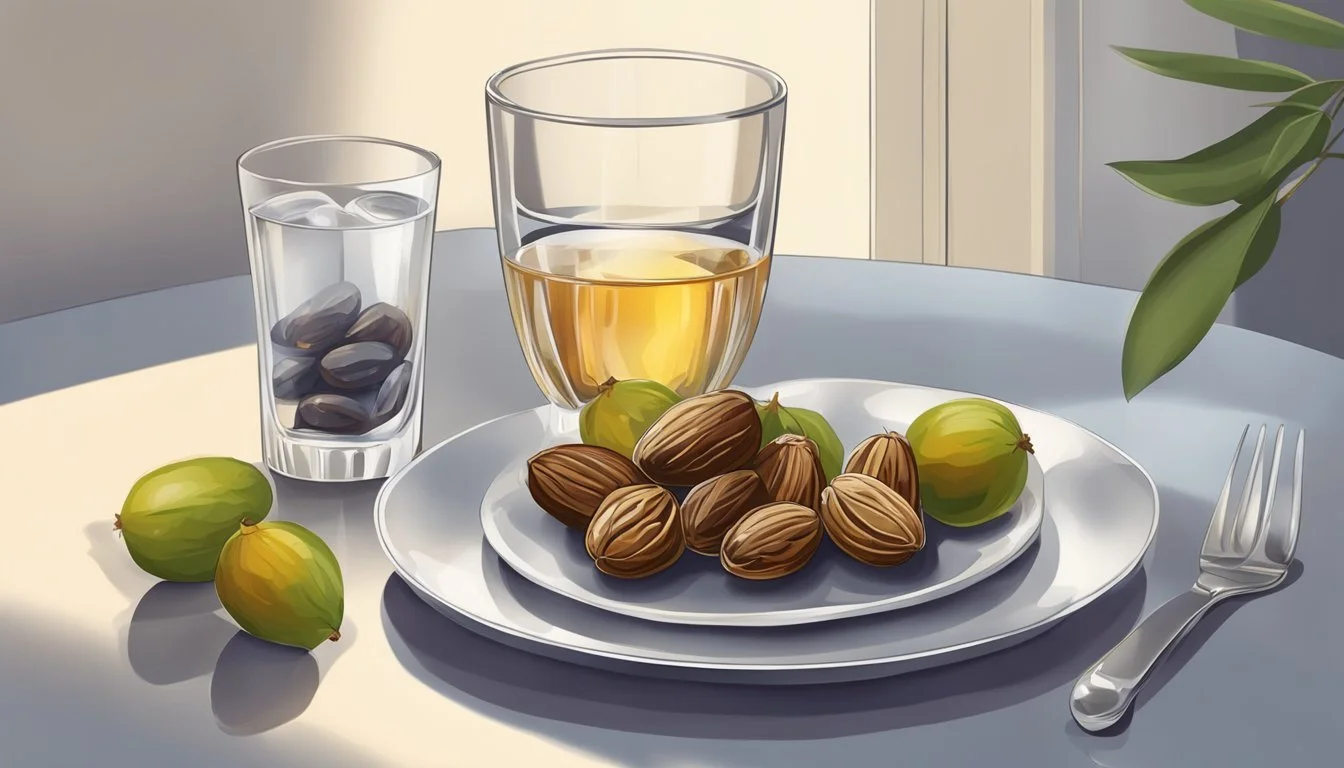How Do You Eat a Date?
Unveiling the Simple Steps
Eating dates is a simple yet delightful experience that introduces individuals to the rich, sweet flavor and chewy texture of this versatile fruit. Dates are the fruit of the date palm tree and have been a staple food in Middle Eastern diets for thousands of years, though their popularity has spread globally. These fruits can be consumed in various forms and are praised for their nutritional benefits, packed with fiber, vitamins, and minerals.
Preparation for eating dates typically involves a few easy steps. Fresh or dried, dates are often enjoyed whole, with the pit removed by making a small incision along the length and pulling out the stone. Depending on personal preference or the recipe's requirements, dates can also be chopped or used to sweeten dishes, enhancing flavors in both sweet and savory contexts. For baked goods, Deglet Noor dates are a desirable choice, while the larger Medjool variety is excellent for snacking or adding a touch of natural sweetness to salads and stews.
Incorporating dates into meals can be creative and simple. They can be stuffed with nuts or cheese as a snack, blended into a date paste for sweetening, or simmered and candied for a dessert. For more elaborate culinary uses, dates may be added to dishes like tagines, providing a depth of flavor, or mixed into smoothies and energy bites for a nutritious boost. Regardless of how they are consumed, dates offer a delicious and wholesome contribution to a balanced diet.
Selecting Dates
Selecting the right type of date can enhance one's culinary experience, whether they're looking for a sweet snack or a natural sweetener for recipes. It is pivotal to understand the differences between fresh and dried dates as well as the unique qualities of popular varieties such as Medjool and Deglet Noor.
Fresh vs. Dried
Fresh dates differ from their dried counterparts in terms of moisture content. They are plump and have a juicy texture, often enjoyed as a soft, fresh fruit. Dried dates, on the other hand, have had most of their moisture removed, making them appear wrinkled and feel stickier, yet they boast a concentrated sweetness and a longer shelf life.
Storage conditions are also a key difference:
Fresh dates should be kept refrigerated to maintain their moist texture.
Dried dates can be stored at room temperature and are more shelf-stable, making them a convenient option.
Medjool and Deglet Noor Varieties
Medjool dates are known for their large size, soft texture, and rich caramel-like flavor. They originate from Morocco but are now widely cultivated in warm climates, with California and Arizona being prime producers. Medjool dates are versatile and can be used both in sweet and savory dishes, or eaten on their own.
Deglet Noor dates are smaller and have a firmer texture compared to Medjool dates. They are often appreciated for their subtle sweetness and a more nuanced flavor. Deglet Noor dates, with roots in North Africa, are also grown in similar climates and are considered the best variety for baking due to their ability to retain shape and texture when cooked.
Nutritional Profile
Dates are nutrient-dense fruits that provide a rich variety of vitamins and minerals, along with essential macronutrients and fiber. Their composition makes them not only a sweet treat but also a beneficial addition to a healthy diet.
Macronutrients and Fiber
A single date typically weighs about 8 grams and offers approximately 23 calories. The macronutrient breakdown for one date is as follows:
Protein: 0.2g
Carbohydrates: 6g
Fat: 0g
Notably, dates are a good source of dietary fiber, providing nearly 2 grams per serving, which aids in digestion and can help maintain regular bowel movements.
Vitamins and Minerals
Dates contain several key minerals and vitamins that are crucial for overall health:
Potassium: Essential for muscle function and heart health.
Magnesium: Involved in over 300 biochemical reactions in the body.
Iron: Necessary for the production of red blood cells.
Copper: Important for the body's energy production and iron metabolism.
Vitamin B6: Plays a role in cognitive development and immune function.
The mineral content in a small serving of dates can contribute to a person's daily nutritional needs, specifically aiding in bone health and blood oxygenation.
Preparation Methods
Before indulging in this sweet fruit, one must prepare dates properly to ensure they are easy to eat and incorporate into recipes.
Pitting Dates
To enjoy dates, one often needs to remove the hard pit found in the center. They should hold the date on its sides and make a small lengthwise incision along the top to extract the pit with ease. Pitted dates are versatile, perfect for stuffing with fillings or adding to various dishes without the worry of an inedible center.
Chopping and Slicing
After pitting, dates can be chopped or sliced, which is ideal for mixing into baked goods or garnishing dishes. For chopping, one can quickly cut dates into smaller pieces using a sharp knife. For uniform slices, they can first halve the dates lengthwise and then cut them crosswise to achieve the desired thickness. Freezing dates for about 15 minutes beforehand makes them firmer and easier to chop or slice.
Consumption Tips
When eating dates, individuals can enjoy them on their own to appreciate their natural sweetness or use them as versatile ingredients that enhance the flavor of various dishes. They offer a sweet taste, nutritional benefits, and can be easily incorporated into one's diet.
Eating Dates Alone
Dates can be a delightful treat when eaten by themselves, with no additional preparation necessary. For consumption as is, they should first be checked for pits. Some varieties, such as Medjool dates, are enjoyed for their larger size and sweet flavor profile, making them perfect for a quick snack. They possess a natural sweetness that satisfies sugar cravings without the need for added sugars.
Dates as Ingredients
Dates serve as a natural sweetener and can be integrated into countless recipes. They add sweetness to dishes without requiring refined sugar. Examples include:
Desserts: Mash the dates into a paste to use as a filling in baked goods or blend with nuts and seeds to make energy bars.
Smoothies: Adding dates to smoothies contributes a rich sweetness and texture.
Savory Dishes: Chopped dates can provide a contrasting sweet note in salads, stews, or tagines.
Dates, being high in natural sugars and carbohydrates, provide a burst of energy to any meal or dessert. They’re most commonly used in their dried form for ease of storage and use.
Date-Pairing Ideas
Dates are versatile fruits that pair exceptionally well with a variety of flavors and textures. They add a natural sweetness to both sweet and savory dishes, and can be enjoyed with a range of other ingredients to enhance their taste.
With Nuts and Cheese
Incorporating dates with nuts and cheese offers a perfect balance of flavors. For a simple yet sophisticated snack, one might fill dates with cream cheese or goat cheese and then sprinkle them with chopped walnuts. This combination delivers a satisfying mix of sweet, creamy, and crunchy elements.
Cream Cheese: Stuff dates with cream cheese for a creamy, rich filling.
Goat Cheese: Pair dates with tangy goat cheese, balancing the sweetness.
Pairing these cheeses with peanut butter also complements the dates’ natural flavor while adding a smooth texture and a punch of protein.
In Sweet and Savory Dishes
Dates can be incorporated into a range of both sweet and savory dishes to add a natural sweetness and chewy texture.
Kale & Quinoa Salad: Adding chopped dates to a kale and quinoa salad introduces a delightful sweet note.
Banana Date Bread: Combining dates into the batter of banana bread infuses the loaf with hints of caramel and deepens the overall flavor.
Not only for bread, dates can also be utilized in making unique spreads like date butter, which pairs well with various types of muffins and breads, turning a simple snack into a gourmet treat.
Incorporating Dates into Recipes
Dates offer a natural sweetness and texture that can elevate various dishes and drinks. Their versatility shines through whether they are blended into smoothies or baked into delectable treats.
Baking with Dates
In baking, dates serve both as a sweetener and a moisture-laden ingredient. They are commonly used in cakes and breads, adding a rich flavor and dense texture. A classic example is banana date bread, where puréed dates and bananas (how long do bananas last?) are integrated into the batter, creating a moist and flavorful loaf. For those seeking dairy-free options, dates can be processed with ingredients like tahini and coconut oil to form no-bake caramels, which can then be chilled and cut into bite-sized pieces.
Dates in Smoothies and Beverages
Dates bring sweetness to smoothies and beverages without the need for added sugars. A date smoothie can be as simple as blending soaked, pitted dates with one's choice of milk or non-dairy alternatives, along with favorite fruits or vegetables for added nutrients. To make a date smoothie, combine dates with bananas, a selection of berries, or leafy greens like kale, and blend until smooth. Dates can also be transformed into a syrup, using water and strained date purée, perfect for sweetening iced teas or cocktails.
Dates in Health and Diet
Dates are a nutrient-dense food that can have positive effects on energy levels and weight management, while also promoting a healthy digestive system and potentially reducing inflammation.
Energy and Weight Management
Dates are an excellent source of natural sugars such as glucose and fructose, providing a quick energy boost when consumed. They are also a good source of fiber, which can help with satiety and prevent overeating. Despite their natural sugars, dates have a low glycemic index, which means they have a slower rate of glucose release into the bloodstream, making them a suitable option for weight management.
Nutrient Profile for Energy & Weight Management:
Sugars: Natural glucose and fructose for quick energy
Fiber: Approximately 1.6g per Medjool date for satiety
Promoting Digestion and Preventing Inflammation
The high fiber content in dates is beneficial for the digestive system, aiding in bowel regularity and preventing constipation. Additionally, dates contain antioxidants such as flavonoids, carotenoids, and phenolic acid, which can help reduce inflammation and have been linked to a lower incidence of diseases related to chronic inflammation.
Digestive and Anti-inflammatory Nutrients:
Fiber: Aids in digestion and prevents constipation
Antioxidants: Flavonoids, carotenoids, and phenolic acid to combat inflammation
Storage and Shelf Life
Proper storage maximizes the shelf life of dates, ensuring they retain quality and flavor. Whether kept at room temperature, refrigerated, or frozen, dates demand specific conditions to stay fresh longer.
Storing at Room Temperature
Dates can be stored at room temperature in an airtight container, where they remain good for 1 to 3 months. A kitchen pantry or counter is suitable, but they should be protected from heat and light. For added convenience, one may use either glass or plastic Tupperware, or opt for resealable plastic bags, expelling air before sealing to minimize oxidation.
Refrigeration and Freezing
When stored in a fridge, dates last longer due to the cooler temperatures slowing down their deterioration. In an airtight container, their quality can be preserved for 6 to 12 months. For extended storage beyond this, freezing is advisable. Dates can be kept in a freezer, where they maintain their quality for even longer periods. It's essential to ensure the dates are well-packaged to avoid freezer burn and flavor transfer from other foods.
Culinary Inspirations
Dates are versatile fruits that can shift between sweet and savory culinary worlds with ease. In many cuisines, particularly those from the Middle East and Northern Africa, they play a pivotal role in both traditional and innovative dishes.
Globally Inspired Date Dishes
In the Middle Eastern and Northern African culinary scapes, dates often appear in savory dishes. They bring natural sweetness to tagines and rice pilafs, balancing the savory and spiced flavors characteristic of these regions. It's common to encounter dates paired with meats like lamb or chicken, where their sweetness complements the robust flavors of the dishes.
Stuffed Dates: A popular delicacy often filled with nuts or cheeses, and sometimes wrapped in bacon (how long does bacon last?) or prosciutto for added texture and taste.
Desserts: Dates serve as a main ingredient in pastries and puddings, where their caramel-like flavor enriches the dessert’s taste profile.
Creative Date Snacks
As a snack, dates offer both nutrition and convenience. They are a powerhouse of energy and can be enjoyed in their natural state or with minimal preparation.
Stuffed Dates: For a quick and nutritious snack, dates can be stuffed with peanut butter or almond butter. Adding a sprinkle of sea salt can enhance their rich flavor.
Bacon-Wrapped Dates: For a blend of sweet and savory, one can wrap dates in bacon and bake until crisp. They make for a popular appetizer at gatherings.
Ancillary to these snack options, chefs and home cooks alike have been known to create energy bars and smoothies with dates, capitalizing on their binding properties and natural sweetness to replace refined sugars.
Advanced Date Cooking Techniques
When cooking with dates, exploring advanced techniques like caramelizing and creating date-based toppings can significantly enhance the flavors of dishes. These methods introduce new textures and rich flavors that can elevate a simple date ingredient into a complex and delightful component of a recipe.
Caramelizing and Infusing Flavors
Dates possess a natural sweetness that can be intensified through caramelization. To caramelize dates, chefs may first pit and chop them before cooking them in a heated pan with a small amount of butter or coconut oil. As the dates heat, their natural sugars begin to brown and develop a deeper, more complex flavor profile, an excellent base for flavored infusions, such as vanilla, cinnamon, or even a splash of rum or honey. This creates a delicious amalgamation of flavors and can be served as a dessert or an accompaniment to savory dishes.
Creating Date-Based Toppings
Date-based toppings offer a nutritional and flavorful alternative to traditional sweeteners. Date paste and date syrup can be made by blending pitted dates with a bit of water until smooth, resulting in a versatile sweetener that can be used in various recipes. For a richer topping, one might blend dates with nut butter or tahini, along with a touch of coconut oil, to create a spread that resembles caramel —without the need for artificial sugars. Sprinkling finely chopped dates mixed with cocoa or chocolate shavings can create an indulgent yet wholesome topping for desserts or even breakfast bowls.
Dates Across Cultures
In many cultures, dates are more than just a sweet treat; they hold significant cultural and culinary importance. Each region has cultivated its own traditions and methods of incorporating dates into the local cuisine.
Middle Eastern Traditions
In the Middle East, the date palm tree is central to life and has been cultivated for thousands of years. Dates are deeply ingrained in Middle Eastern culture, often associated with hospitality and celebrations. A common tradition during Ramadan is breaking the fast with dates, which is a nod to how the Prophet Muhammad is said to have broken his fast. Middle Eastern cuisine offers a variety of ways to enjoy dates:
Stuffed Dates: Often filled with almonds, orange zest, or cream cheese.
In Beverages: Dates are sometimes blended into juices or used to sweeten tea.
Date Molasses: A syrup made from dates that is used in cooking and as a topping.
Date Use in American Cuisine
In the U.S., date palms are predominantly grown in California and Arizona, thriving in their desert climates. While dates might not be as deeply rooted in American culinary traditions, they have found their place in a variety of dishes:
Baking: Chopped dates are featured in cookies, breads, and other baked goods.
Energy Bars and Snacks: Known for their natural sweetness, dates are a key ingredient in many health bars.
Savory Dishes: Medjool dates, with their sweet and meaty texture, are ideal for stuffing with cheese or wrapping in bacon.
The diverse applications of dates in American and Middle Eastern cuisine demonstrate their versatility and enduring appeal across cultures.
Date Varieties and Their Unique Traits
When exploring the world of dates, one will find a vast array of varieties each with unique characteristics, such as regional specificity, texture, and sweetness. These factors define how a date is best enjoyed, whether it's eaten as is or used in culinary dishes.
Understanding Regional Date Types
Dates grow in many regions around the world, but they thrive predominantly in the Middle East and North Africa. Each region yields date varieties with distinct flavors and uses. For instance, Medjool dates, often referred to as the "king of dates," originate from Morocco. They are prized for their large size, plump texture, and high sugar content, making them ideal for eating fresh. Conversely, Deglet Noor dates are typically cultivated in Algeria and Tunisia, known for their elongated shape and a transparent color that has earned them the nickname "the queen of dates." They possess a more subtle sweetness, making them suitable for both baking and cooking.
Texture and Sweetness Levels
The texture of dates can vary considerably between different types and can generally be categorized as soft, semi-dry, or dry. Medjool dates are categorized as soft, characterized by their chewy, moist flesh that lends a rich, caramel-like sweetness. They are exceptionally sweet due to their naturally high fructose levels. On the other hand, Deglet Noor dates have a firmer texture and are less sweet compared to Medjool, often described as having a delicate sweetness with a hint of nuttiness. When it comes to texture, one can often tell a date's moisture level by its appearance: a glossy, plump exterior usually indicates a softer date, while a more wrinkly appearance suggests a drier date. This dryness typically equates to a lower sugar content, making such dates a more subtle addition to recipes where overwhelming sweetness is not desired.
Pairing Dates with Drinks
When enjoying dates, selecting the right drink to accompany them can elevate the experience. Certain beverages complement the rich and sweet flavor of dates, making for a perfect pairing.
Wines and Spirits
For those who indulge in alcoholic beverages, wines and spirits can serve as excellent companions to dates.
White Wine: A chilled glass of white wine, especially a Riesling or a Sauvignon Blanc, pairs well with dates wrapped in prosciutto, balancing the sweet and salty flavors.
Dessert Wines: Sweeter dessert wines like Sauternes or Vin Santo complement the sugary notes of dates, enhancing the fruit's natural sweetness without overpowering it.
Non-Alcoholic Beverages
For a non-alcoholic option, there are various drinks that can pair nicely with dates.
Smoothies: Incorporate pitted dates into a morning smoothie for natural sweetening. Dates blend particularly well with the zestiness of oranges, bananas, and a splash of coconut milk to create a refreshing and nutritious drink.
Herbal Teas: A cup of hot herbal tea, such as chamomile or mint, can be a soothing match for dates, whether they are enjoyed as a snack or as part of a dessert.
Healthy Living with Dates
Incorporating dates into one's diet can offer a natural alternative to refined sugars and support an energetic lifestyle. They also bring a wealth of antioxidants, essential for maintaining good health. Dates suit a vegan diet and can be particularly beneficial in the morning for a calorie-conscious energy boost.
Alternative Sweetener
Dates are packed with natural sugars, which release energy gradually, making them an excellent sweetener alternative. These sugars are mostly in the form of fructose, which can sweeten recipes without causing the rapid blood sugar spikes associated with refined sugars. Simply blending dates into a paste can replace sugar in baking, smoothies, and sauces, providing a healthier and more natural option.
Sweetening power: Dates vs. Sugar
Dates: Natural fructose; gradual energy release
Sugar: Refined sucrose; rapid blood sugar spike
Dates for Active Lifestyles
For those leading active lifestyles, dates offer a concentrated source of calories and energy in a small, portable form. A morning serving of dates can kickstart the day with a quick supply of energy, ideal for athletes or anyone needing a sustained fuel source. They’re also rich in antioxidants, defending against oxidative stress which can occur during intense physical activity.
Benefits for active individuals:
Morning energy source: Quick calorie content
Antioxidant provision: Combat oxidative stress
Dates and Beauty
While dates are often recognized for their sweet taste and nutritional benefits when consumed, their impact on beauty, particularly through natural skincare and hair health, is noteworthy.
Dates in Natural Skincare
Dates contain a multitude of vitamins and antioxidants which are beneficial for skin health. Specifically, they are rich in Vitamin B6 and antioxidants which can help improve the skin’s elasticity, reducing the appearance of fine lines and wrinkles. A person can create natural, homemade face masks using date paste — its application may contribute to healthier, glowing skin.
Dates for Hair Health
The iron content in dates promotes circulation to the scalp, enhancing hair growth and vitality. Moreover, dates are a source of essential fatty acids that can help to nourish the scalp and hair follicles. Integrating dates into one's diet or applying date oil to the hair can strengthen strands and impart a natural sheen.



